Diffusion Confusion?
Diffusion is an enigma. On one hand, it’s probably the most famous mode of acoustic treatment, what with those sexy skyline diffusors that are so memorable; but it is also probably the most misunderstood of all acoustic treatment options. In addition it’s easy to get overwhelmed with the myriad of options for adding diffusion to a studio, theater, or listening room. While we have previously covered the various GIK options for higher-frequency acoustic treatment, we haven’t really gone into detail about what makes each type different and why you should choose one type of diffusion over another.
The fact is, there are several types of diffusion, and they all sound different: acoustically different from one another, from absorption, and from untreated reflective surfaces. The differences between them are often magnified when treating the small, domestic rooms most of us are working with. Let’s take a closer look….
Diffusion Basics
If you need a refresher on diffusion basics, I recommend reading two articles: Diffusion Is A Wonderful Tool and Small Rooms, High Frequencies: A Well-Balanced Audio Room Using GIK’s Patented Treatments. These two articles give a great foundation to both diffusion theory in general as well as practical applications with GIK’s acoustic treatments.
To review a few basic “big picture” concepts on diffusion’s place in a treatment strategy, diffusion is one of three possibilities for acoustic treatment on a surface. The first and most familiar is absorption, which reduces or eliminates reflections by removing the sound energy from the room. The second is reflection, which means installing an angled surface to “aim” the reflected sound in a useful direction, typically away from a listener or a microphone. Diffusion is the third method, which produces “uniform dispersion,” meaning it scatters the sound evenly in all directions. The nature and properties of such scattering is what concerns us here. There are different ways to achieve scattering, with slightly different variations on each.
Scattering & Dispersion
But what do we mean by scattering? Scattering isn’t a very precise term; usually when we say “scatter” in reference to sound, what we really mean is “dispersion.” And there are two broad types of dispersion relative to diffusion: spatial dispersion and temporal dispersion, which simply describe dispersion over Space and Time. To illustrate the point, let’s go to the billiard ball metaphor commonly used to describe sound reflections.
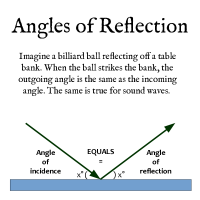
A normal, untreated, reflective wall would treat a sound reflection like a billiard ball banking off the table. All the normal physics of this interaction apply; the angle of incidence is the same as the angle of reflection, so the billiard ball bounces off the table, moving in a predictable direction based on its initial trajectory, and emerges from the reflection relatively unscathed (ie, it’s still the same billiard ball).
But what if we put up a diffusor at the reflection point, so the billiard ball hits the diffusor? Well, if the diffusor is working correctly, then the billiard ball will explode into multiple fragments, with each fragment fanning out evenly in its own direction relative to the reflection point. This is spatial dispersion; the billiard ball fragments are scattered evenly in all directions (across the 180 degree plane of the diffusor).
But, good diffusors also exhibit temporal dispersion, so imagine each billiard ball fragment emerges from the reflection at a slightly different time relative to one another, almost as if the fragments were being fired from a machine gun being wildly waved back & forth (across the plane of diffusion), until all the fragments were fired.
The important takeaway point is that a good diffusor scatters reflections across both space and time. So what are some diffusion designs, and how do they perform compared to one another? There are three broad categories of diffusion we will discuss: Reflection Phase Gratings, Geometric diffusors, and Binary Amplitude diffusors.
Reflection Phase Gratings
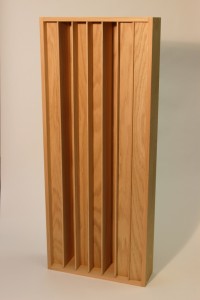
Reflection Phase Gratings are the older, and generally more familiar, mode of diffusor. It consists of a panel divided into wells, or grates, of equal width and variable (precisely calculated) depth. These grates can be one-dimensional (planar) or two-dimensional (skyline), meaning they diffuse sound across one plane (left-right) or two planes (left-right, up-down). There are several types of phase gratings, including Maximum Length Sequence (MLS), Quadratic Residue (QRD), and Primitive Root (PRD). The differences between them come from different mathematical algorithms used to calculate the well depth patterns. They perform similarly with a few important differences.
The different well depths provides spatial diffusion, since sound coming off the gratings will be aimed in various directions. It also provides temporal diffusion, since there are slightly different distances the sound must travel before it is reflected from the back of the well. In addition, each well is “tuned” to a different frequency (the wavelength of the well depth), and in close proximity to the well this resonance is audible. This is one reason why it’s good to be a certain distance away from a Reflection Phase Grating, putting those resonances far enough away that they are no longer audible.
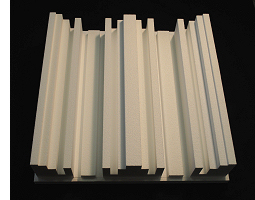
In addition, this style of acoustic diffusor does not have truly even scattering in all directions; its scattering effect is optimized at the tuned frequency and its octaves, producing “lobes” in the scattering, with decent dispersion between each octave. To return to the billiard ball fragment analogy, this means fewer fragments of the “expoded” or diffused billiard ball, though they are evenly spaced.
But even with these limitations, a Reflection Phase Grating diffusor such as the GIK Acoustics Q7D or GIK Acoustics GridFusor are highly effective within their operating range. Provided they are used in situations where their strengths are maximized and their weaknesses minimized, they often remain the best option for overall acoustic diffusion performance when space and budget permit.
Geometric Diffusors
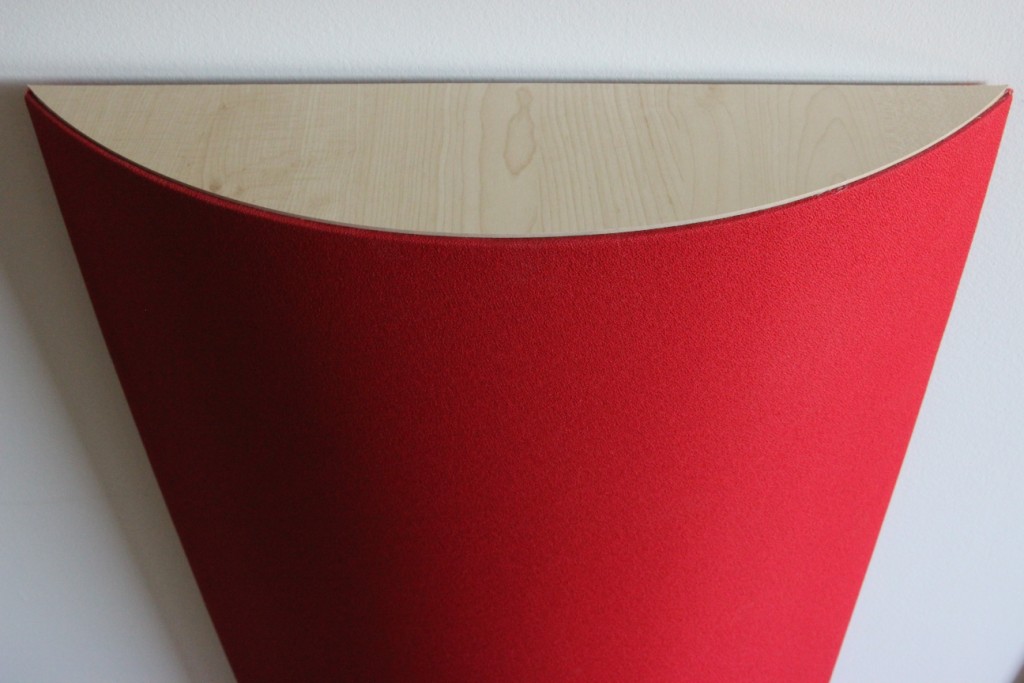
Geometric Diffusors are perhaps the simplest type of diffusor, in that they are simple reflective surfaces bent to a convex curved surface. This shape provides a different angle of reflection depending on the angle of incidence, providing an acoustic scattering effect and measurable diffusion. Geometric Diffusors also lend themselves well to hybrid designs; they can be both diffusive and absorptive. Diffusion performance is good for normal incidence, in other words, sounds that come from right in front of the poly diffusor. Diffusion performance for oblique incidence, or sounds that strike the diffusor at an angle, isn’t as good.
Geometric diffusors also benefit from being spaced out from one another. Putting 2 of the same shape directly adjacent to each other creates a concave shape between them, and can cause resonances by focusing soundwaves. Absorption is often a better choice for flanking a Geometric Diffusor. Used in the right way, Geometric Diffusors like the GIK Acoustics Polyfusor can also produce excellent results, particularly when used in combination with other acoustic treatments.
Binary Amplitude
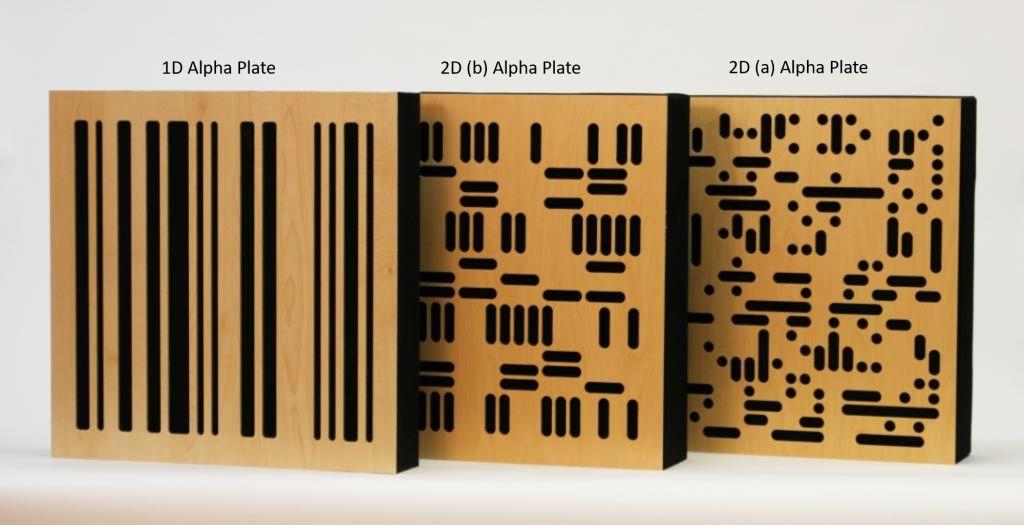
Binary Amplitude Diffusors are a different method of providing diffusion. Like reflection phase gratings they also rely upon mathematical sequences but rather than having wells of varying depths, they employ a sequence of surfaces that alternate reflection and absorption. This binary (reflect OR absorb) sequence creates variable impedance and creates diffusion. Diffusion can either be planar (one-dimensional) or two-dimensional.
Overall, diffusion performance may not be quite as good as reflection phase gratings, but this design provides several advantages:
-
Absorption and Diffusion together. These types of diffusors inherently provide both acoustic absorption and diffusion at different frequencies, which is quite useful particularly in small rooms where you can’t really have too much low frequency absorption, but you want to preserve the high end liveliness or ambiance. This style of diffusor just has a pleasing sound to it, that is not the same as other diffusor designs or absorption alone.
-
Closer Proximity. One benefit of Binary Amplitude diffusors is that you can sit closer to them without the same ill-effects of Phase Grate diffusion. The latter type of diffusion relies on wells of different lengths and resonances, which produces audible coloration if you are close enough to it. The Binary Amplitude diffusion mechanism does not produce resonances in the same way, so they do not color the sound in close proximity.
-
Minimized Lobing. Lobing is one of the artifacts of some diffusor designs, but the binary amplitude diffusors don’t exhibit as much lobing as other designs, even when their sequence is repeated.
-
Better Aesthetics. Binary Amplitude diffusors can be built with a uniform depth, which is often much more acceptable fit & finish with existing architecture and décor. Also, the panels can be quite thin (as little as 2” in the case of the Alpha 2A), and still provide effective diffusion. They can also be covered with cloth to give a uniform appearance with other products (absorbers, bass traps) elsewhere in the room.
Because of all these advantages, the GIK Alpha Panels are often a superior choice for small room acoustics. They provide diffusion with thinner, more aesthetically-pleasing panels that can be more easily integrated into small, household rooms, and also perform better in many circumstances since the listener can be closer to them, and multiple Alpha Panels can be placed next to one another without a performance hit from lobing. Alpha Panels also provide absorption at lower frequencies, which always helps small rooms. Furthermore, the front face of the Alpha Panel also provides a membrane effect, which increases the absorption at bass frequencies which, again, is very beneficial in small rooms.
Mix It Up
As you can see, all types of diffusors have certain strengths and weaknesses. If there were only one type of perfect diffusor, then multiple options would be unnecessary. But all the options sound acoustically different from one another, and all the options can have a role in the treatment strategy for a given room. By going through the strengths and weaknesses of each design, you now have more information about the best way to add diffusion to your room. While corner bass trapping and absorption at reflection points remain the most important acoustic treatment strategies, effective use of diffusion can take a good room over the top and make it truly great for audio: listening, recording, mixing, or mastering.
When In Doubt, Ask For Help
As always, we are happy to help you strategize about which type of diffusion is best for your room and your budget with our many years of experience and patented GIK Acoustic treatments. Contact us for free acoustical advice.





GIK Giveaway Viral Video Contest 2024
Room EQ Wizard TUTORIAL
How to set up and use REW In this video we show you how [...]
DIFFUSION Concepts Explained
How Acoustic Diffusers Work And Which One Is Right For You In this video [...]
Jan
The GIK Acoustic Advice
Get Your Room Sound Right For FREE! In this video we are giving a [...]
Jan
Designer Tips: The Significance of “Clouds” with Mike Major
When people reach out to us at GIK for acoustic advice, we never have any [...]
Jun
Designer Tips: The Importance of Coverage Area with James Lindenschmidt
The most important factor in acoustic treatment performance is coverage area. Or more specifically, the [...]
May
Designer Tips: Home Theaters and Acoustic Balance with John Dykstra
Without fail, one of the first things our clients say to us when we begin [...]
May
Summer Giveaway 2021 Vote
The GIK Acoustics Summer Giveaway Photo Contest 2021 invited customers to submit photos illustrating how [...]
Aug